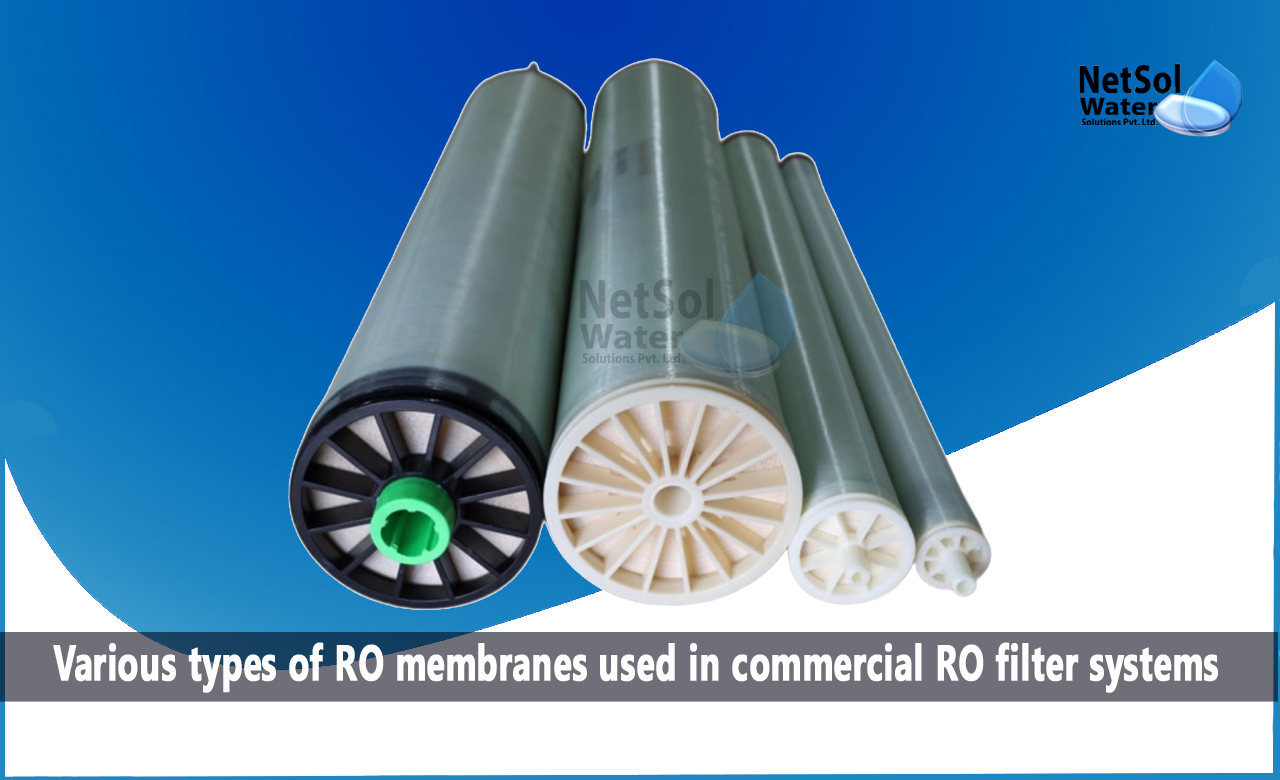Various types of RO membranes used in commercial RO filter systems
Commercial Reverse Osmosis (RO) filter systems are widely used in various industries such as food and beverage, pharmaceuticals, hospitals, and other manufacturing industries. These systems use a semi-permeable RO membrane to remove impurities and contaminants from water, making it safe and clean for consumption.
In this blog post, we will discuss various types of RO membranes used in commercial RO filter systems, and how to choose the right one for your business needs.
- Cellulose Acetate (CA) Membrane: Cellulose acetate (CA) is a type of RO membrane that is cost-effective and easy to produce. These membranes have a lower rejection rate than other types of RO membranes, making them ideal for applications where highwater recovery is required. They are commonly used in residential and commercial RO filter systems. However, CA membranes are more susceptible to fouling and chlorine damage than other membranes, which can reduce their lifespan and require more frequent maintenance.
- Thin Film Composite (TFC) Membrane: Thin Film Composite (TFC) is a type of RO membrane that is widely used in commercial and industrial RO filter systems. These membranes have a higher rejection rate than CA membranes, making them more effective at removing impurities and contaminants. TFC membranes are made of a thin film layer of polyamide, which is deposited on a support layer. These membranes have a longer lifespan than CA membranes and are less susceptible to fouling and chlorine damage.
- Cellulose Triacetate (CTA) Membrane: Cellulose Triacetate (CTA) is a type of RO membrane that is similar to CA membranes but has a higher rejection rate. These membranes are commonly used in applications where the feed water has a high chlorine content, as they are less susceptible to chlorine damage than TFC membranes. CTA membranes are widely used in the food and beverage industry. However, these membranes are more prone to biological fouling, which can reduce their lifespan and require more frequent maintenance.
- Nanofiltration (NF) Membrane: Nanofiltration (NF) is a type of RO membrane that has a higher rejection rate than CA and CTA membranes but a lower rejection rate than TFC membranes. NF membranes are effective at removing divalent ions and organic matter from water, making them ideal for applications such as water softening and desalination. However, NF membranes have a lower salt rejection rate than TFC membranes, which can limit their effectiveness in some applications.
- Reverse Osmosis-Membrane Bioreactor (RO-MBR) Membrane: Reverse Osmosis-Membrane Bioreactor (RO-MBR) is a type of RO membrane that combines the benefits of RO and Membrane Bioreactor (MBR) technologies. These membranes are commonly used in wastewater treatment applications, as they are effective at removing organic matter, pathogens, and other contaminants from water. RO-MBR membranes have a high rejection rate and are less susceptible to fouling than other membranes, making them a reliable and cost-effective solution for wastewater treatment.
Conclusion:
Choosing the right type of RO membrane for a commercial RO filter system depends on the specific application and water quality. Each type of membrane has its benefits and limitations, and it's essential to understand these factors to select the most effective membrane for your business. Factors such as water quality, operating conditions, and maintenance requirements should be considered when choosing an RO membrane. By selecting the right RO membrane, businesses can ensure they have a reliable and cost-effective solution for producing clean and safe water.
If you are curious to know more, feel free to contact us at +91-9650608473 or enquiry@netsolwater.com



